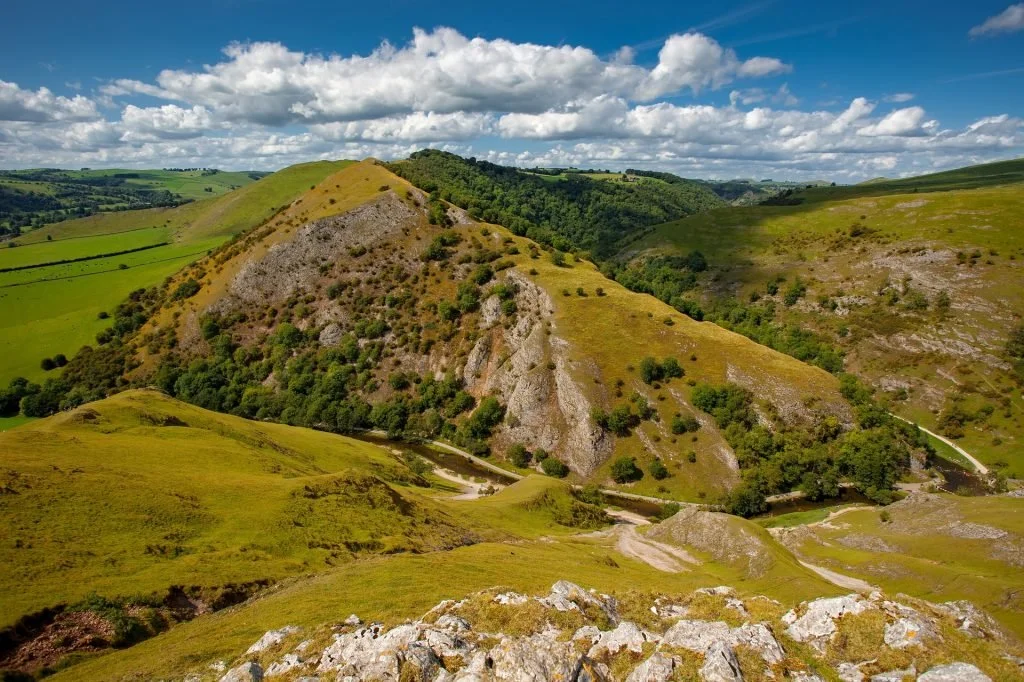The Case for a British Grand Slam of Ultrarunning
In preparation for my recent conversation with Damian Hall following his win at Lakeland 100 (episode dropping 13th August), I was surprised to find that the 50-miler at Lakeland is perhaps, by participant numbers, the largest ultra in the UK, with over 1300 starters.
Surprised because, with its Running Stones and connection to the wider UTMB World Series, I had assumed that one of the races at Ultra-Trail Snowdonia – likely the 50k – would have drawn in the biggest crowd. (It was close, with over 1100 starters.)
I don’t know much about the trajectory of either of these events in terms of participant numbers year on year. Nor do I have any intel about their actual capacities. But nonetheless it would appear that the appeal of a British classic like Lakeland retains an edge over the international glamour of UTMB. For now.
This got me wondering about the longevity question more generally. How can races committed to an ethos of independence and, as the French might put, ‘the spirit of the trail’ retain a competitive edge? Runners participating in an increasingly ‘pyramidised’ market – where individual events are merely rungs in the ladder of a bigger league or series – get to experience the hugely motivating appeal of a multi-year project. Points accrue, qualification standards beckon – it takes time and money, but it gives you a sense of direction and a big, hairy, audacious goal to walk towards, year after year.
In this context, what is there to attract the committed ultrarunner to the British classics, which currently sit in isolation as independent events? Could there be a case for the establishment of a British Grand Slam?
Damian Hall and Ry Webb at Lakeland 100 (Credit: No Limits Photography)
In the States, such a structure has existed since at least the 1980s. The Grand Slam of Ultrarunning involves completing four of the five classic US 100-milers – Western States, Vermont, Leadville, Wasatch, and Old Dominion – in a single calendar year. It unfortunately appears to be plagued by administrative problems – many people who complete the slam are not recognised as having done so due to the need to apply to a separate committee and pay a fee to be officially recognised. But the spirit of independence shines through.
Personally, I could do without the ‘single calendar year’ stipulation. As impressive an achievement as it might be, the completion of four 100-milers across the country in a single year requires both a financial and time commitment that is inherently exclusionary. Not to mention it encourages athletes to push into dangerous territory with regards to injury risk. I would suggest that requiring runners to complete the Slam within four years – at a minimum cadence of one event per year – would be a more sustainable approach.
What Races Would Be Included?
Were there to be a British Grand Slam of Ultrarunning, it would be important to establish a small set of clear rules for what could qualify. I would suggest something like:
Each event is owned and operated independently
Each event can broadly be categorised as a 100-miler, recognising that exact distances vary
Each event takes place in and showcases a distinct region of the UK
Each event is organised to a high standard, with a well-marked course and regular aid stations, i.e. a trail race rather than a navigational challenge
Above and beyond this, I think it would be important for each race in the Slam to be inarguably ‘a classic’, whatever that means exactly. Achieving this status requires a few things. For one, you probably have to have been going for a while – at least ten years, perhaps – to allow for the event to embed itself in the calendar, and for stories and legends about it to grow and evolve. But you also need that special combination of a scenic course, an established community, and a race director or organising committee with the kind of vision necessary to keep an event on the right path over the years.
There are two events that immediately spring to mind as deserving a spot in the ranks of a British Grand Slam – the aforementioned Lakeland 100, and Centurion’s South Downs Way 100. Each has been going over a decade, is organised to a high standard, retains a spirit of independence, and each showcases a unique and distinct part of the British landscape. Case closed.
Mark Darbyshire en route to his course record at South Downs Way 100 - click here for the podcast debrief (Credit: World Trail Majors)
For me, the West Highland Way Race also has to be in the mix. Working against it is the fact that it’s ‘only’ 95 miles, and its self-described ‘optimal’ field size of 250 does limit its accessibility. But it’s been going since the 1980s and showcases what is to me the premier long-distance trail in Britain. To leave it out of the Grand Slam would be a crime.
I’d also make the case for the Hardmoors 110 to be included. It has been going since 2008, and whilst it only attracts a hundred or so runners each year, I am sure its capacity is much higher. It showcases a truly unique region of the UK and retains a spirit of independence. And, despite taking place in May, conditions at the race can be tough, with mud, wet, and cold regularly making an appearance - it only feels right that the UK Grand Slam would need some inclement conditions thrown in. For me it’s on the list.
That gives us four races, but to match the US Grand Slam requires five, of which runners are required to complete four. Let’s take stock:
May: Hardmoors 110
June: South Downs Way 100
July: West Highland Way Race
July: Lakeland 100
These events are quite bunched together in the calendar, but with the four-year timespan stipulation, that wouldn’t be an issue.
With its mix of coast and moorland, Hardmoors showcases some of the UK’s most spectacular running landscapes (Credit: Hardmoors)
Adding to the list gets difficult. In years gone by, Arc of Attrition would of course have been a serious contender (and helpfully added some variety to the calendar), but its acquisition by UTMB excludes it from consideration. The same goes for the UTS 100-miler, although the course there is so ridiculously difficult (according to Tom Joly when I spoke to him following his 3rd place finish, it’s more along the lines of a fell running round than a trail race) that I would probably leave it off regardless of who owned it.
Perhaps a viable Welsh contender could be the Beacons Way Ultra, hosted by GB Ultras – a full traverse of the Brecon Beacons National Park. Hilly without venturing into insanity, showcasing a truly special corner of the UK, it seemingly ticks all the boxes. Although it has not been running for a particularly long time, so perhaps lacks ‘classic’ status.
Race to the Stones, which has been running since 2013, is for me a UK classic. Alongside its mass participation appeal, it has attracted seriously fast runners over the years, and has brought widespread attention to the Ridgeway in a way no other event has been able to do. But being only 100km, it unfortunately does not qualify – and besides, in the context of the entirety of the UK, the Ridgeway is too similar to the South Downs Way for Race to the Stones to feel distinct enough for inclusion.
Regionally, it feels as though the Midlands needs representation. My partner being from Staffordshire, it’s been a quiet regret of mine for some time that there is no major Peak District ultramarathon with the kind of national reputation the region deserves. Beyond Marathon’s Peak District 100 looks like a spectacular route, rightly showcasing both the formidable Dark Peak and the more bucolic White Peak – but with only 28 finishers in 2023, and no results listed for 2024, it perhaps lacks the scale needed (although, it should be noted, results do not indicate capacity.) The Spine Challenger South, with its extensive kit list and single aid station, feels too far removed from a conventional trail race to be included. It feels like there is a real opportunity for an experienced RD to put a stake in the ground in the Peaks, hosting a Festival du Templiers-style challenging ultra right in the heart of England.
Hilly without being mountainous, the Peak District is crying out for a world-class ultramarathon (Credit: Explore Peak District)
Then there is of course the question of whether one of the classic canal races should be included. Having first been run in 1993, the Grand Union Canal Race is undoubtedly a British classic. But its 145-mile distance and the fact that it is entirely on towpath puts it in a different category from the likes of South Downs Way, Lakeland, or the West Highland Way. Besides, we already have the Canal Slam!
All in all, it feels like qualifying events are thin on the ground. There are of course many iconic events with roots in the fell and hill running scenes – Dragon’s Back, Northern Traverse, the Spine, Cape Wrath, Ring o’ Fire. But, when it comes to out-and-out trail 100-milers, whilst there are many low-key events with participant numbers in the 10s or low hundreds, there are only a handful of race organisers truly striking that balance between organisational prowess and community focus that is so necessary for a race to become iconic. The UK is a nation of hobbyists, and in this regard, perhaps it shows.
What would you include? Let me know. It would be great to see this idea gain momentum and help buttress independent UK races against the encroaching appeal of the globalised trail running industry.
Ed Scott




